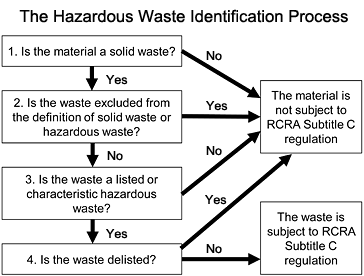What is a Hazardous Waste?
Simply defined, a hazardous waste is a waste with properties that make it dangerous or capable of having a harmful effect on human health or the environment. Hazardous waste is generated from many sources, ranging from industrial manufacturing process wastes to batteries and may come in many forms, including liquids, solids gases, and sludges.
Kunzite developed a regulatory definition and process that identifies specific substances known to be hazardous and provides objective criteria for including other materials in the regulated hazardous waste universe. This identification process can be very complex, so Kunzite encourages generators of wastes to approach the issue using the series of questions described below:
